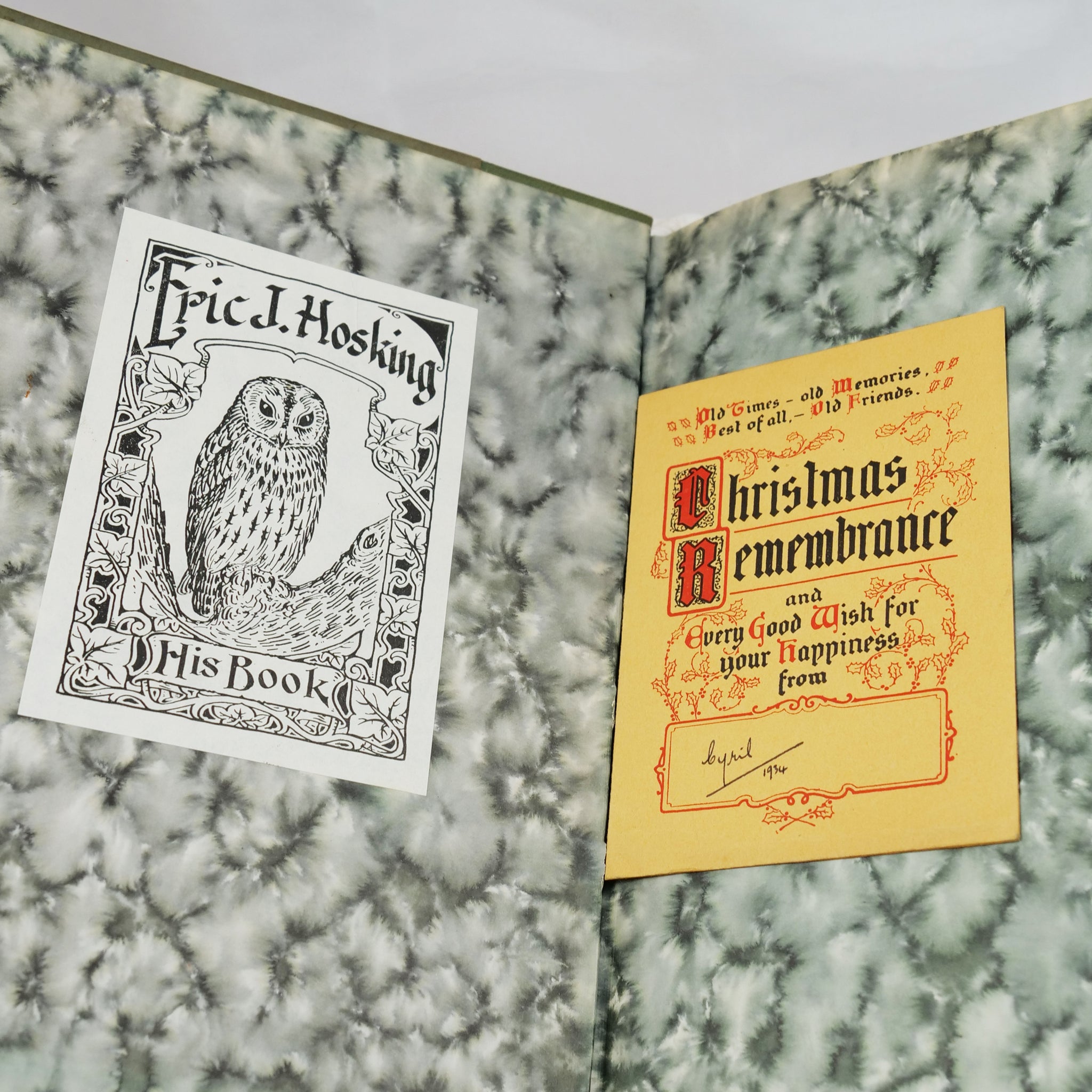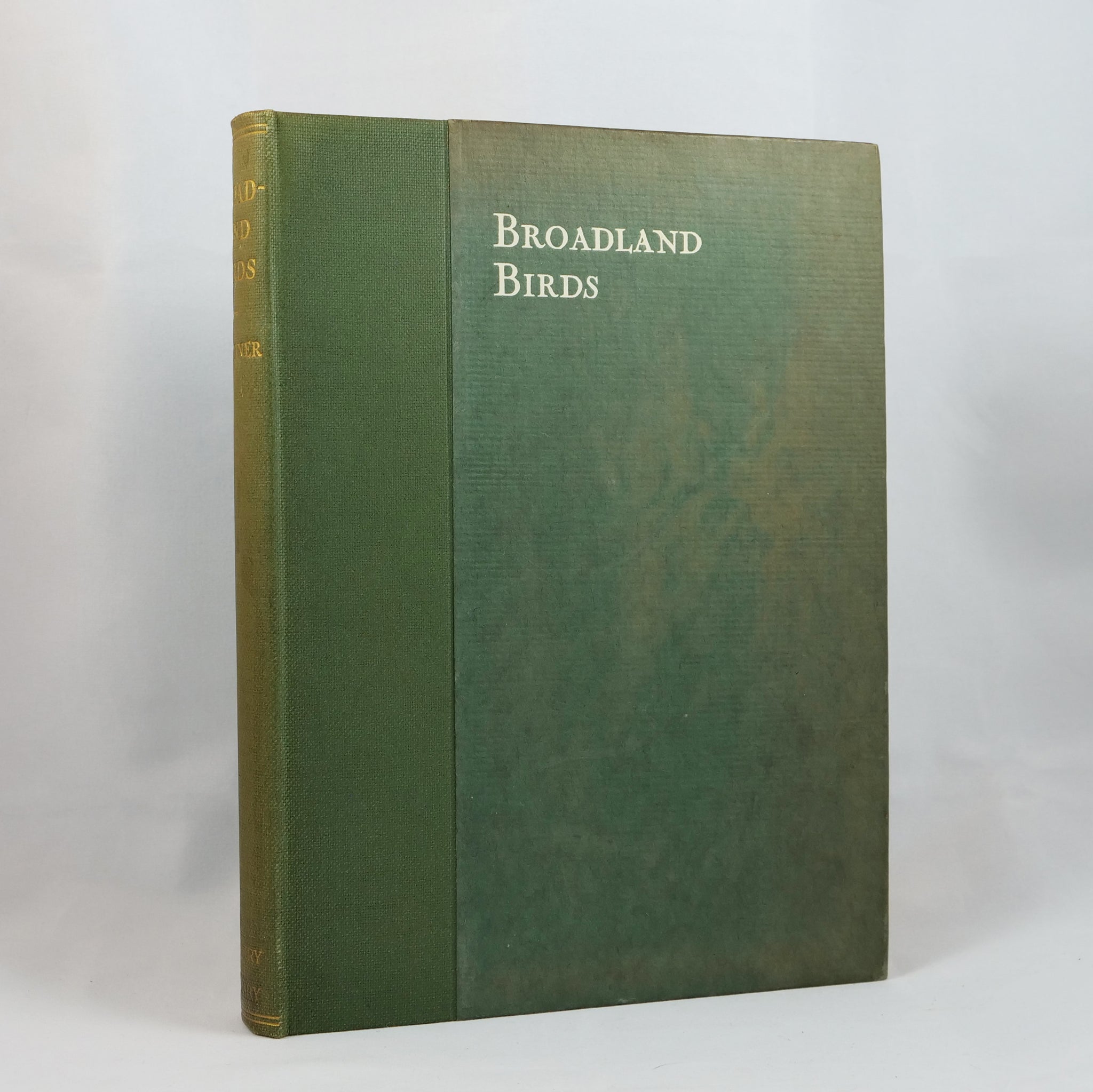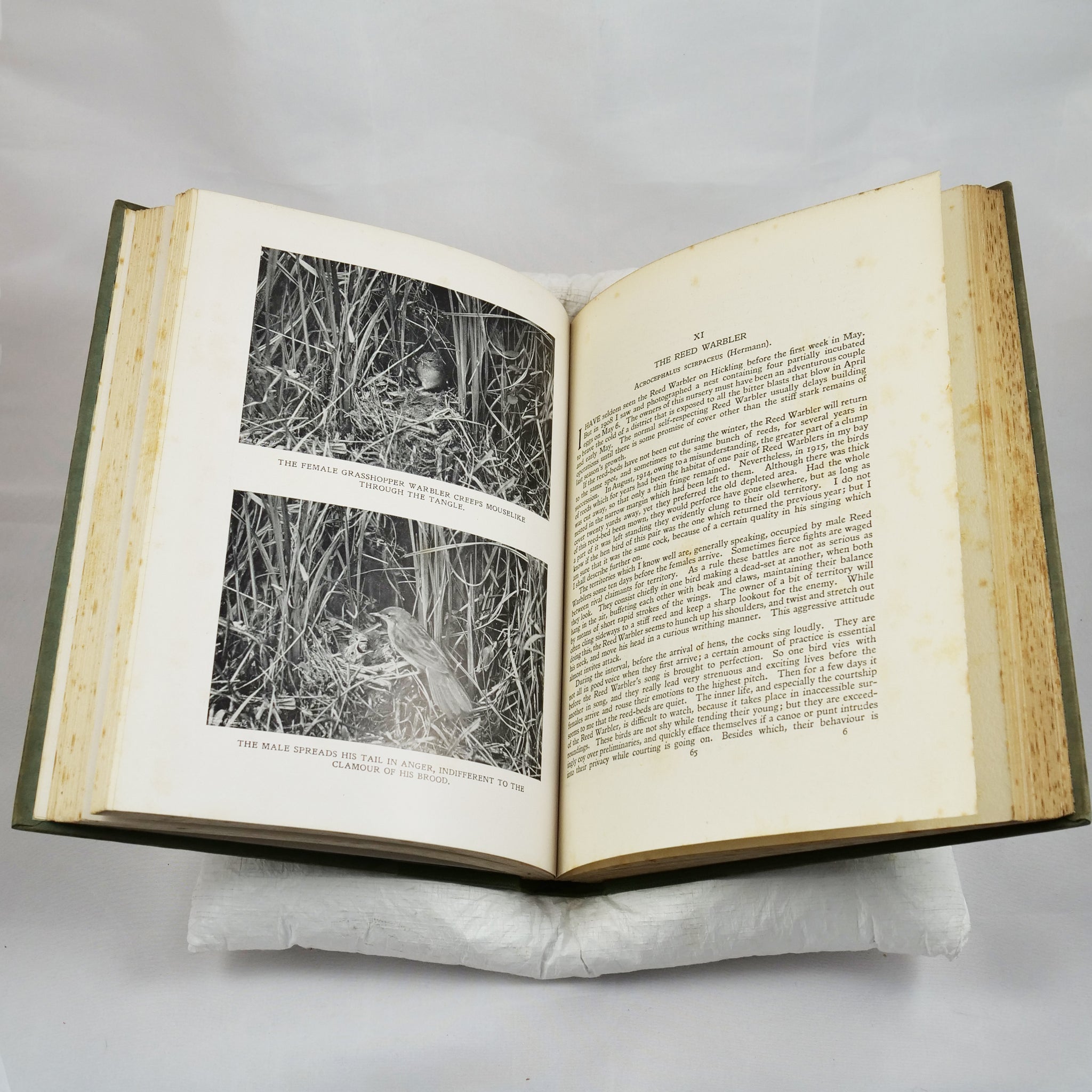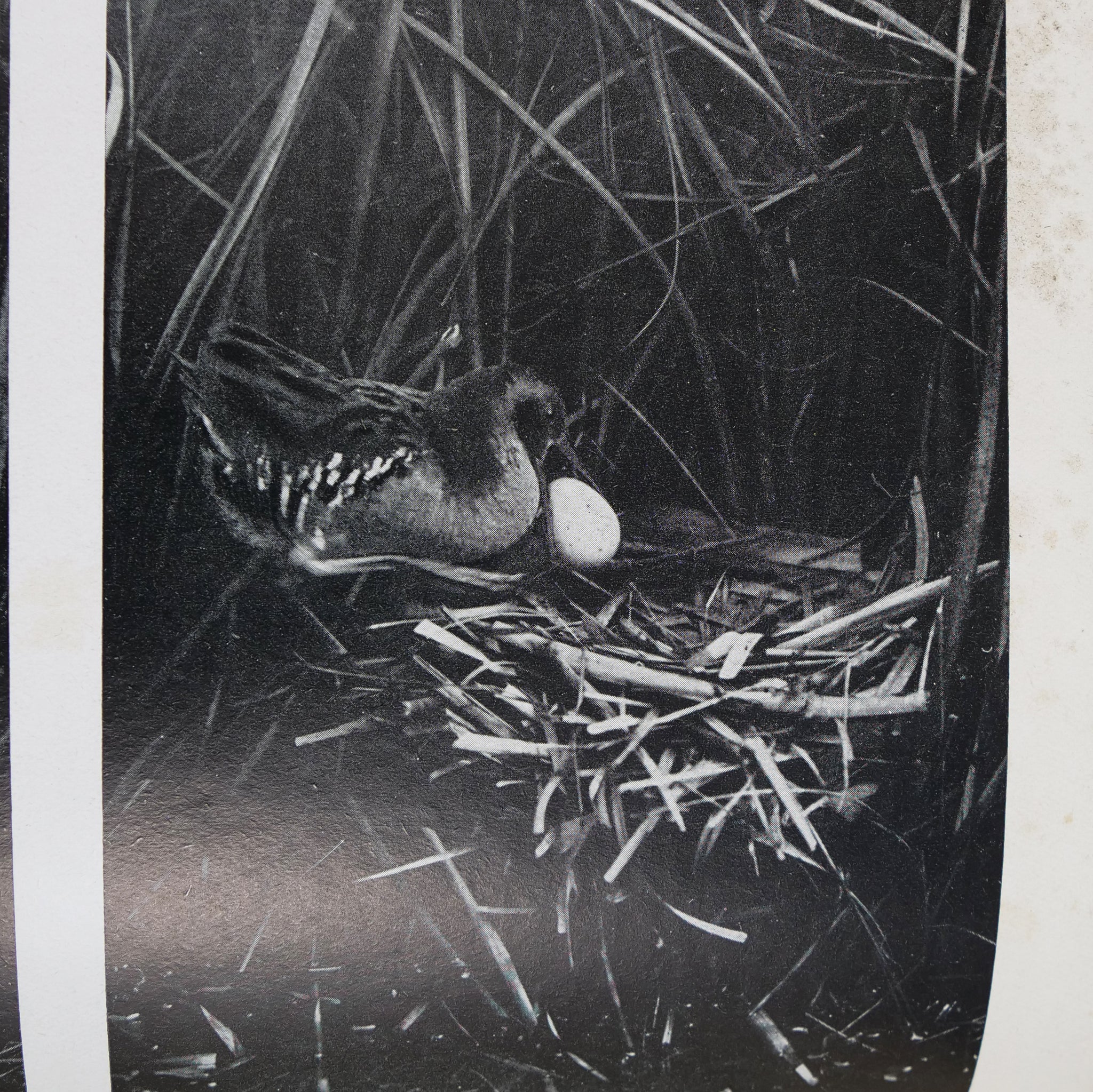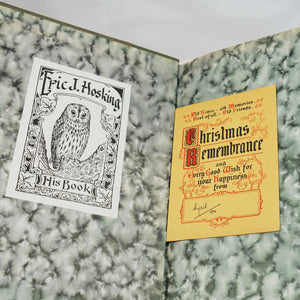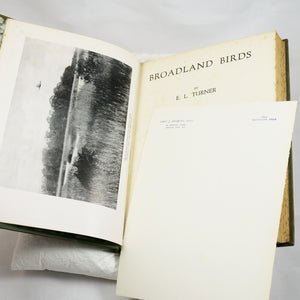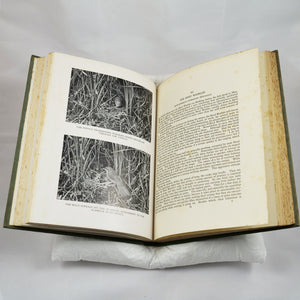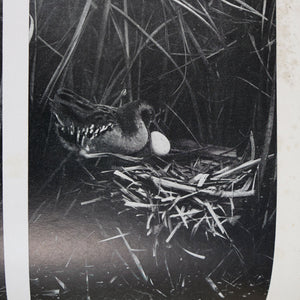Turner, E. L. | Broadland Birds
£250.00
-
First and only edition of this beautifully illustrated work by pioneering bird photographer Emma Louise Turner (1867-1940), which includes the first publication of her award-winning photo of a Great Crested Grebe on its nest. This copy from the library of prominent bird photographer Eric J. Hosking (1909-1991), demonstrating the strong influence that Turner had on later generations in her field. In the introduction to their 1947 book, Masterpieces of Bird Photography, Hosking and co-author Harold Lowes lamented that they were unable to include her image of a water rail because no prints or negatives could be located.
This copy from the library of prominent bird photographer Eric J. Hosking (1909-1991), with his owl bookplate and a blank sheet of his stationery loosely inserted, as well as a Christmas card signed “Cyril, 1934”. This was likely from Cyril Newberry, a Fellow of the Royal Photographic Society employed by the London Midlands & Scottish Railway Scientific Research Laboratory, and one of Hosking’s frequent co-authors.
Author E. L. Turner became interested in photography after meeting wildlife photographer Richard Kearton in 1900. She joined the Royal Photographic Society the following year, and by 1904 was giving talks illustrated with her own slides. Turner was particularly interested in birds and travelled throughout the UK and Europe to photograph them, but her main base was in the Norfolk Broads, where she lived for part of each year beginning as early as 1901. This was where, in 1911, she photographed a nestling bittern, proving that the species was breeding in Britain for the first time since 1886. Another highlight of her career was the award of the Royal Photographic Society’s Gold Medal for a photograph of a great crested grebe on its nest, published in Broadland Birds in 1924. In 1904 Turner was elected one of the first fifteen female members of the Linnean Society. In 1909 she became one of the first four honorary female members of the British Ornithologist’s Union, and she was the only woman involved in the 1933 appeal that led to the creation of the British Trust for Ornithology.
The owner of this copy, Eric Hosking, developed his loves for nature and photography at an early age and by 1937 he was first person in Britain to make their living solely in this field. Hosking was intrepid in his pursuit of wild birds. He designed his own hides and made a number of important technical advances, among them the use of the flash in nature photography. His most famous photo is the “technically perfect” shot of a barn owl carrying prey that he captured using an electronic flash in 1948 (Sage, “A Photographer in Hiding”, New Scientist, September 1979). He is widely credited with developing wildlife photography into a mature art form. Hosking was awarded the RSPB’s Gold Medal in 1974, and three years later received an OBE. -
London: Country Life, Ltd., 1924.
Quarto. Original green quarter cloth, green boards, titles to spine gilt and to upper board in white, marbled endpapers. Frontispiece and 25 double-sided plates from photos by the author. Spine very slightly toned, boards with mottled fading as usual for this book, spotting to the contents and edges of the text block.

